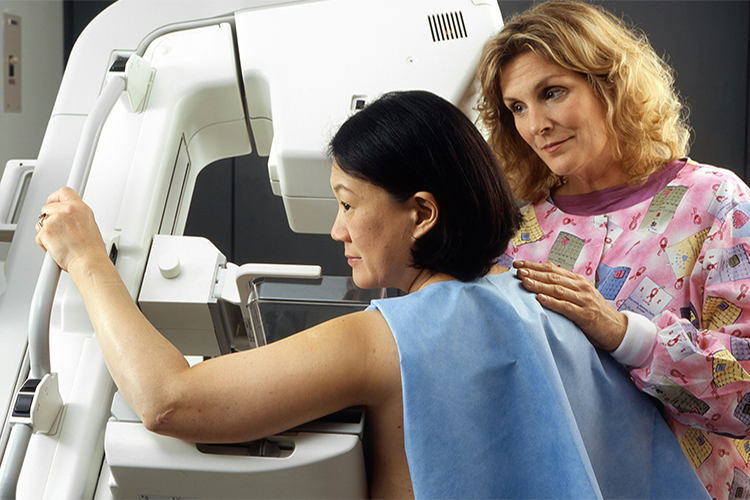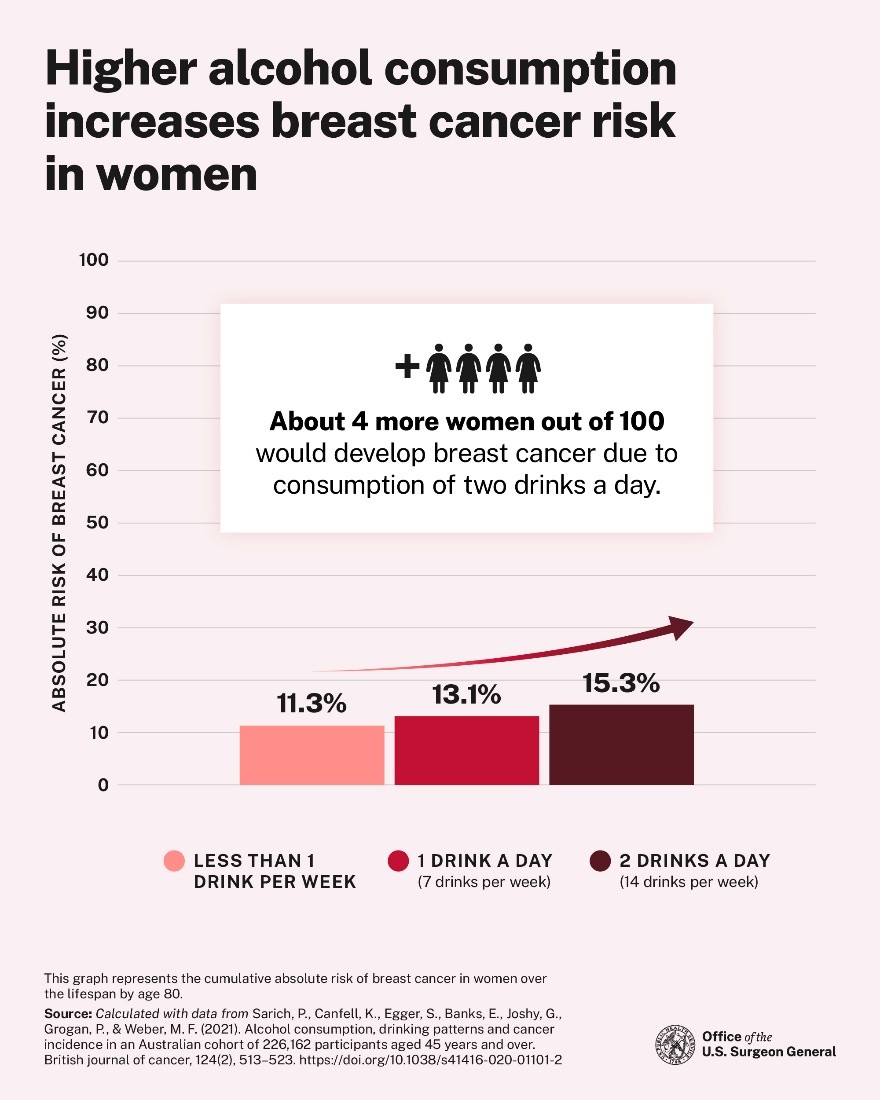Breast Cancer Linked to Alcohol Consumption
- Filed under "education"
- Published Monday, January 20, 2025
- « back to articles

This week a study from the American Cancer Society revealed that, although mortality from cancer has declined by 1/3 since 1991, more young and middle-aged women are being diagnosed with cancer. This in itself is alarming, but the Iowa Cancer Registry’s 2024 report points out that Iowa continues to hold the second highest and fastest rate of new cancers in the United States.
The American Cancer Society’s annual survey (2025) found that cancer in women is multiplying – overall cancer incidence rates among women below age 50 were 82% higher than in same-aged men, up from 51% higher in 2002. (Women between the ages of 50 and 64 are also seeing an increase.) Breast cancer specifically has been rising quickly among women under 50 – twice as rapidly as among older women.

There are numerous causes for cancer, but recently the U.S. Surgeon General released an advisory that there is a direct link between alcohol consumption and cancer risk, noting that alcohol consumption is the third leading preventable cause of cancer in the United States, following tobacco and obesity. In fact, Iowa has the 4th highest incidence of alcohol-related cancers in the U.S., and the highest rate in the Midwest.
The advisory points out “The direct link between alcohol consumption and cancer risk is well-established for at least seven types of cancer including cancers of the breast, colorectum, esophagus, liver, mouth (oral cavity), throat (pharynx), and voice box (larynx), regardless of the type of alcohol (e.g., beer, wine, and spirits) that is consumed. For breast cancer specifically, 16.4% of total breast cancer cases are attributable to alcohol consumption.” And women are more likely than men to develop cancer due to alcohol consumption.
How does this correlate? Binge drinking in Iowa – defined as 5 or more drinks on one occasion for men, 4 or more on one occasion for women – affects 22% of Iowans, again placing Iowa 4th in the nation. For young people, binge drinking is a problem for 15% of Iowans ages 12-20 reported binge drinking, and one-quarter of this population reported having at least one drink in 2019-2020.
All types of alcoholic beverages, and any amount of drinking, increases the overall risk of cancer, yet less than half of adults know that alcohol affects cancer risk. Of course, the more one drinks, the higher the risk. To help minimize the risks associated with drinking, the 2020-2025 Dietary Guidelines for Americans recommend that adults of legal drinking age choose not to drink or to drink in moderation by limiting intake to 2 drinks or less in a day for men and 1 drink or less in a day for women, on days when alcohol is consumed.
Prevention, as always, is key to reducing the risk and incidence of cancer, particularly for “modifiable” causes like tobacco use, alcohol consumption, skin cancer, and diet. Campaigns and information for young people are available through the following links: “Talk. They Hear You,” “Helping Teens Quit,” “Can Cancers in Adolescents Be Prevented?,” and information on the recent ban on red dye No. 3 give advice on ways to decrease the risk.
We have an opportunity through Chrysalis After-School and GirlPower to educate girls and young women on the range of risks they can avoid – hopefully decreasing the incidence of cancer and other preventable diseases in the future. We’re all about the well-being of girls and women, join us.